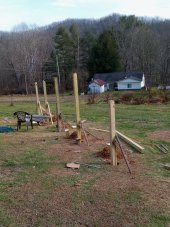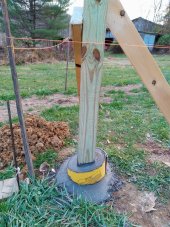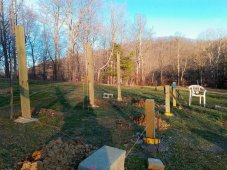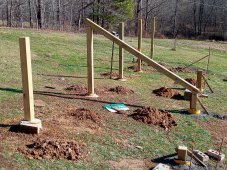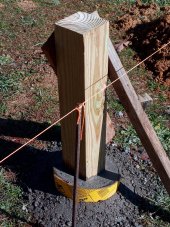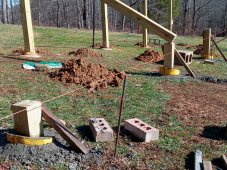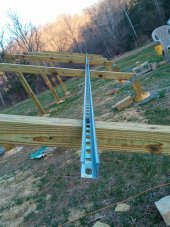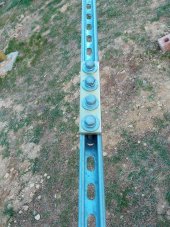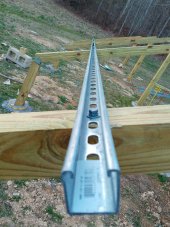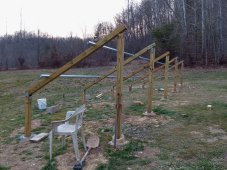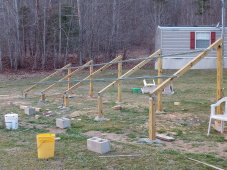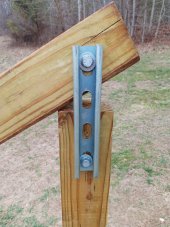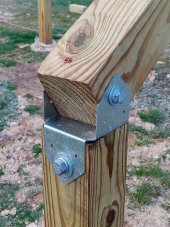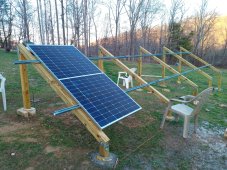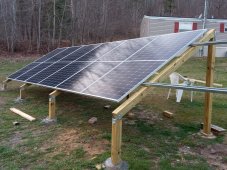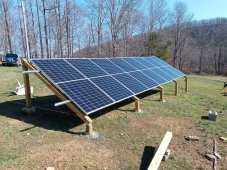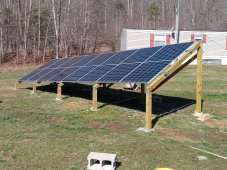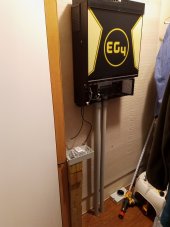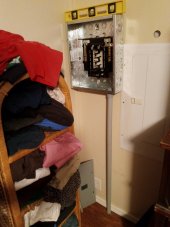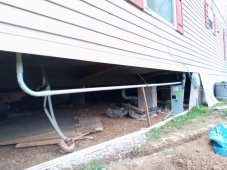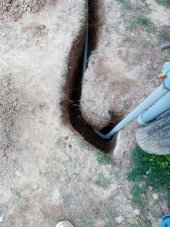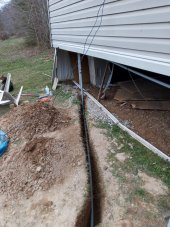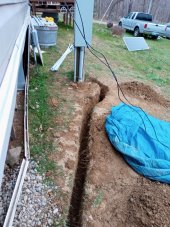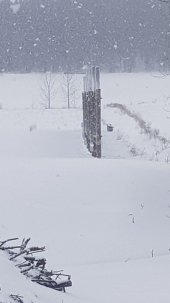Subdood
Photon Wrangler
Hello all, I had posted a thread regarding ground mount grounding and posted a few pics of it. So, I wanted to start a new thread on here showing the progress of my system. We are situated in a rural location NE Kentucky, and wanted to have a supplemental/backup solar system in case of frequent power outages and the fragility of the power grid. It'll be mostly to run 120V items like lights, frig/freezers, TV's, lights, etc.
To begin, I bought eight 445W Canadian Solar bifacial panels back in July from Santan Solar and received them about a month later. I got a really good deal on them, about $195 apiece. They were returned by an installer who had decided they didn't want them. So other than a few frame scratches, they are practically new. I didn't want to build the ground mount until I got the inverter, an EG4 6500, which arrived in late October. I don't have any batteries yet, but plan on adding some when funds become available. I was planning on getting one or two of EG4 Lifepower4 rack batteries, but have considered building my own.
Anyways, I started the mount in early November and finished it last week, and with the help of my wife we installed the panels last weekend. It took a long time because I got sick a couple times, and the weather was either very cold or too wet to pour concrete. So I had to wait for it dry up some and be warm enough to pour concrete.
I am in the process of running some capacity tests on the panels and inverter before I start running wires and laying conduit. I plan on mounting the inverter in a closet closest to the array, which is about 50ft away. I will be installing a critical loads sub panel next to our home main panel and running conduit between the two. I will slowly be moving my 120V circuits over to the sub panel.
Ok enough talk, here are some pics. For the back support posts, I used 8ft long 4x4's spaced 7ft apart, except the west post is 6ft. Total length is about 28ft. I dug them about 2ft deep, with a couple inches of gravel at the bottom to rest the posts on. I used a couple 50lb bags of quikrete to anchor them. On top of the holes, I put cut sonotubes at an angle on one side and flat on the other to help drain water away from the posts.
To begin, I bought eight 445W Canadian Solar bifacial panels back in July from Santan Solar and received them about a month later. I got a really good deal on them, about $195 apiece. They were returned by an installer who had decided they didn't want them. So other than a few frame scratches, they are practically new. I didn't want to build the ground mount until I got the inverter, an EG4 6500, which arrived in late October. I don't have any batteries yet, but plan on adding some when funds become available. I was planning on getting one or two of EG4 Lifepower4 rack batteries, but have considered building my own.
Anyways, I started the mount in early November and finished it last week, and with the help of my wife we installed the panels last weekend. It took a long time because I got sick a couple times, and the weather was either very cold or too wet to pour concrete. So I had to wait for it dry up some and be warm enough to pour concrete.
I am in the process of running some capacity tests on the panels and inverter before I start running wires and laying conduit. I plan on mounting the inverter in a closet closest to the array, which is about 50ft away. I will be installing a critical loads sub panel next to our home main panel and running conduit between the two. I will slowly be moving my 120V circuits over to the sub panel.
Ok enough talk, here are some pics. For the back support posts, I used 8ft long 4x4's spaced 7ft apart, except the west post is 6ft. Total length is about 28ft. I dug them about 2ft deep, with a couple inches of gravel at the bottom to rest the posts on. I used a couple 50lb bags of quikrete to anchor them. On top of the holes, I put cut sonotubes at an angle on one side and flat on the other to help drain water away from the posts.




